The Ancient Mysteries and Secret Societies (Part 2)
That Simon was a philosopher there is no doubt, for wherever his exact words are preserved his synthetic and transcending thoughts are beautifully expressed. The principles of Gnosticism are well described in the following verbatim statement by him, supposed to have been preserved by Hippolytus: “To you, therefore, I say what I say, and write what I write. And the writing is this. Of the universal Æons [periods, planes, or cycles of creative and created life in substance and space, celestial creatures] there are two shoots, without beginning or end, springing from one Root, which is the power invisible, inapprehensible silence [Bythos]. Of these shoots one is manifested from above, which is the Great Power, the Universal Mind ordering all things, male, and the other, [is manifested] from below, the Great Thought, female, producing all things. Hence pairing with each other, they unite and manifest the Middle Distance, incomprehensible Air, without beginning or end. In this is the Father Who sustains all things, and nourishes those things which have a beginning and end.” (See Simon Magus, by G. R. S. Mead.) By this we are to understand that manifestation is the result of a positive and a negative principle, one acting upon the other, and it takes place in the middle plane, or point of equilibrium, called the pleroma. This pleroma is a peculiar substance produced out of the blending of the spiritual and material æons. Out of the pleroma was individualized the Demiurgus, the immortal mortal, to whom we are responsible for our physical existence and the suffering we must go through in connection with it. In the Gnostic system, three pairs of opposites, called Syzygies, emanated from the Eternal One. These, with Himself, make the total of seven. The six (three pairs) Æons (living, divine principles) were described by Simon in the Philosophumena in the following manner: The first two were Mind (Nous) and Thought (Epinoia). Then came Voice (Phone) and its opposite, Name (Onoma), and lastly, Reason (Logismos) and Reflection (Enthumesis). From these primordial six, united with the Eternal Flame, came forth the Æons (Angels) who formed the lower worlds through the direction of the Demiurgus. (See the works of H. P. Blavatsky.) How this first Gnosticism of Simon Magus and Menander, his disciple, was amplified, and frequently distorted, by later adherents to the cult must now be considered.
The School of Gnosticism was divided into two major parts, commonly called the Syrian Cult and the Alexandrian Cult. These schools agreed in essentials, but the latter division was more inclined to be pantheistic, while the former was dualistic. While the Syrian cult was largely Simonian, the Alexandrian School was the outgrowth of the philosophical deductions of a clever Egyptian Christian, Basilides by name, who claimed to have received his instructions from the Apostle Matthew. Like Simon Magus, he was an emanationist, with Neo-Platonic inclinations. In fact, the entire Gnostic Mystery is based upon the hypothesis of emanations as being the logical connection between the irreconcilable opposites Absolute Spirit and Absolute Substance, which the Gnostics believed to have been coexistent in Eternity. Some assert that Basilides was the true founder of Gnosticism, but there is much evidence to the effect that Simon Magus laid down its fundamental principles in the preceding century.
The Alexandrian Basilides inculcated Egyptian Hermeticism, Oriental occultism, Chaldean astrology, and Persian philosophy in his followers, and in his doctrines sought to unite the schools of early Christianity with the ancient pagan Mysteries. To him is attributed the formulation of that peculiar concept of the Deity which carries the name of Abraxas. In discussing the original meaning of this word, Godfrey Higgins, in his Celtic Druids, has demonstrated that the numerological powers of the letters forming the word Abraxas when added together result in the sum of 365. The same author also notes that the name Mithras when treated in a similar manner has the same numerical value. Basilides caught that the
Simon
Magus, having called upon the Spirits of the Air, is here shown being
picked up by the demons. St. Peter demands that the evil genii release
their hold upon the magician. The demons are forced to comply and Simon
Magus is killed by the fall.
powers of the
universe were divided into 365 Æons, or spiritual cycles, and that the
sum of all these together was the Supreme Father, and to Him he gave the
Qabbalistical appellation Abraxas, as being symbolical, numerologically, of His divine powers, attributes, and emanations. Abraxas
is usually symbolized as a composite creature, with the body of a human
being and the head of a rooster, and with each of his legs ending in a
serpent. C. W. King, in his Gnostics and Their Remains, gives the
following concise description of the Gnostic philosophy of Basilides,
quoting from the writings of the early Christian bishop and martyr, St.
Irenæus: “He asserted that God, the uncreated, eternal Father, had first
brought forth Nous, or Mind; this the Logos, Word; this again
Phronesis, Intelligence; from Phronesis sprung Sophia, Wisdom, and
Dynamis, Strength.”In describing Abraxas, C. W. King says:
“Bellermann considers the composite image, inscribed with the actual name Abraxas, to be a Gnostic Pantheos, representing the Supreme Being, with the Five Emanations marked out by appropriate symbols. From the human body, the usual form assigned to the Deity, spring the two supporters, Nous and Logos, expressed in the serpents, symbols of the inner senses, and the quickening understanding; on which account the Greeks had made the serpent the attribute of Pallas. His head–that of a cock–represents Phronesis, that bird being the emblem of foresight and of vigilance. His two arms hold the symbols of Sophia and Dynamis: the shield of Wisdom and the whip of Power.”The Gnostics were divided in their opinions concerning the Demiurgus, or creator of the lower worlds. He established the terrestrial universe with the aid of six sons, or emanations (possibly the planetary Angels) which He formed out of, and yet within, Himself. As stated before, the Demiurgus was individualized as the lowest creation out of the substance called pleroma. One group of the Gnostics was of the opinion that the Demiurgus was the cause of all misery and was an evil creature, who by building this lower world had separated the souls of men from truth by encasing them in mortal vehicles. The other sect viewed the Demiurgus as being divinely inspired and merely fulfilling the dictates of the invisible Lord. Some Gnostics were of the opinion that the Jewish God, Jehovah, was the Demiurgus. This concept, under a slightly different name, apparently influenced mediæval Rosicrucianism, which viewed Jehovah as the Lord of the material universe rather than as the Supreme Deity. Mythology abounds with the stories of gods who partook of both celestial and terrestrial natures. Odin, of Scandinavia, is a good example of a deity subject to mortality, bowing before the laws of Nature and yet being, in certain senses at least, a Supreme Deity.
The Gnostic viewpoint concerning the Christ is well worthy of consideration. This order claimed to be the only sect to have actual pictures of the Divine Syrian. While these were, in all probability, idealistic conceptions of the Savior based upon existing sculpturings and paintings of the pagan sun gods, they were all Christianity had. To the Gnostics, the Christ was the personification of Nous, the Divine Mind, and emanated from the higher spiritual Æons. He descended into the body of Jesus at the baptism and left it again before the crucifixion. The Gnostics declared that the Christ was not crucified, as this Divine Nous could not suffer death, but that Simon, the Cyrenian, offered his life instead and that the Nous, by means of its power, caused Simon to resemble Jesus. Irenæus makes the following statement concerning the cosmic sacrifice of the Christ:
“When the uncreated, unnamed Father saw the corruption of mankind, He sent His firstborn, Nous, into the world, in the form of Christ, for the redemption of all who believe in Him, out of the power of those that have fabricated the world (the Demiurgus, and his six sons, the planetary genii). He appeared amongst men as the Man Jesus, and wrought miracles.” (See King’s Gnostics and Their Remains.)The Gnostics divided humanity into three parts: those who, as savages, worshiped only the visible Nature; those who, like the Jews, worshiped the Demiurgus; and lastly, themselves, or others of a similar cult, including certain sects of Christians, who worshiped Nous (Christ) and the true spiritual light of the higher Æons.
After the death of Basilides, Valentinus became the leading inspiration of the Gnostic movement. He still further complicated the system of Gnostic philosophy by adding infinitely to the details. He increased the number of emanations from the Great One (the Abyss) to fifteen pairs and also laid much emphasis on the Virgin Sophia, or Wisdom. In the Books of the Savior, parts of which are commonly known as the Pistis Sophia, may be found much material concerning this strange doctrine of Æons and their strange inhabitants. James Freeman Clarke, in speaking of the doctrines of the Gnostics, says: “These doctrines, strange as they seem to us, had a wide influence in the Christian Church.” Many of the theories of the ancient Gnostics, especially those concerning scientific subjects, have been substantiated by modern research. Several sects branched off from the main stem of Gnosticism, such as the Valentinians, the Ophites (serpent worshipers), and the Adamites. After the third century their power waned, and the Gnostics practically vanished from the philosophic world. An effort was made during the Middle Ages to resurrect the principles of Gnosticism, but owing to the destruction of their records the material necessary was not available. Even today there are evidences of Gnostic philosophy in the modern world, but they bear other names and their true origin is not suspected. Many of the Gnostic concepts have actually been incorporated into the dogmas of the Christian Church, and our newer interpretations of Christianity are often along the lines of Gnostic emanationism.
 THE MYSTERIES OF, ASAR-HAPI
THE MYSTERIES OF, ASAR-HAPI
The identity of the Greco-Egyptian Serapis (known to the Greeks as Serapis and the Egyptians as Asar-Hapi)
is shrouded by an impenetrable veil of mystery. While this deity was a
familiar figure among the symbols of the secret Egyptian initiatory
rites, his arcane nature was revealed only to those who had fulfilled
the requirements of the Serapic cultus. Therefore, in all probability,
excepting the initiated priests, the Egyptians themselves were ignorant
of his true character. So far as known, there exists no authentic
account of the rites of Serapis, but an analysis of the deity and his
accompanying symbols reveals their salient points. In an oracle
delivered to the King of Cyprus, Serapis described himself thus:
”A god I am such as I show to thee,
The Starry Heavens are my head, my trunk the sea,
Earth forms my feet, mine ears the air supplies,
The Sun’s far-darting, brilliant rays, mine eyes.”
Several unsatisfactory attempts have been made to etymologize the word Serapis. Godfrey Higgins notes that Soros was the name given by the Egyptians to a stone coffin, and Apis was Osiris incarnate in the sacred bull. These two words combined result in Soros-Apis or Sor-Apis, “the tomb of the bull.” But it is improbable that the Egyptians would worship a coffin in the form of a man.The Starry Heavens are my head, my trunk the sea,
Earth forms my feet, mine ears the air supplies,
The Sun’s far-darting, brilliant rays, mine eyes.”
Several ancient authors, including Macrobius, have affirmed that Serapis was a name for the Sun, because his image so often had a halo of light about its head. In his Oration Upon the Sovereign Sun, Julian speaks of the deity in these words: “One Jove, one Pluto, one Sun is Serapis.” In Hebrew, Serapis is Saraph, meaning “to blaze out” or “to blaze up.” For this reason the Jews designated one of their hierarchies of spiritual beings, Seraphim.
The most common theory, however, regarding the origin of the name Serapis is that which traces its derivation from the compound Osiris-Apis. At one time the Egyptians believed that the dead were absorbed into the nature of Osiris, the god of the dead. While marked similarity exists between Osiris-Apis and Serapis, the theory advanced by Egyptologists that Serapis is merely a name given to the dead Apis, or sacred bull of Egypt, is untenable in view of the transcendent wisdom possessed by the Egyptian priestcraft, who, in all probability, used the god to symbolize the soul of the world (anima mundi). The material body of Nature was called Apis; the soul which escaped from the body at death but was enmeshed with the form during physical life was designated Serapis.
C. W. King believes Serapis to be a deity of Brahmanic extraction, his name being the Grecianized form of Ser-adah or Sri-pa, two titles ascribed to Yama, the Hindu god of death. This appears reasonable, especially since there is a legend to the effect that Serapis, in the form of a bull, was driven by Bacchus from India to Egypt. The priority of the Hindu Mysteries would further substantiate such a theory.
Among other meanings suggested for the word Serapis are: “The Sacred Bull,” “The Sun in Taurus,” “The Soul of Osiris,” “The Sacred Serpent,” and “The Retiring of the Bull.” The last appellation has reference to the ceremony of drowning the sacred Apis in the waters of the Nile every twenty-five years.
THE LION-FACED LIGHT-POWER.
This
Gnostic gem represents by its serpentine body the pathway of the Sun
and by its lion head the exaltation of the solar in the constellation of
Leo.
Labyrinths
and mazes were favored places of initiation among many ancient cults.
Remains of these mystic mazes have been found among the American
Indians, Hindus, Persians, Egyptians, and Greeks. Some of these mazes
are merely involved pathways lined with stones; others are literally
miles of gloomy caverns under temples or hollowed from the sides of
mountains. The famous labyrinth of Crete, in which roamed the
bull-headed Minotaur, was unquestionably a place of initiation into the
Cretan Mysteries.
There is
considerable evidence that the famous statue of Serapis in the Serapeum
at Alexandria was originally worshiped under another name at Sinope,
from which it was brought to Alexandria. There is also a legend which
tells that Serapis was a very early king of the Egyptians, to whom they
owed the foundation of their philosophical and scientific power. After
his death this king was elevated to the estate of a god. Phylarchus
declared that the word Serapis means “the power that disposed the universe into its present beautiful order.”In his Isis and Osiris, Plutarch gives the following account of the origin of the magnificent statue of Serapis which stood in the Serapeum at Alexandria:
While he was Pharaoh of Egypt, Ptolemy Soter had a strange dream in which he beheld a tremendous statue, which came to life and ordered the Pharaoh to bring it to Alexandria with all possible speed. Ptolemy Soter, not knowing the whereabouts of the statue, was sorely perplexed as to how he could discover it. While the Pharaoh was relating his dream, a great traveler by the name of Sosibius, coming forward, declared that he had seen such an image at Sinope. The Pharaoh immediately dispatched Soteles and Dionysius to negotiate for the removal of the figure to Alexandria. Three years elapsed before the image was finally obtained, the representatives of the Pharaoh finally stealing it and concealing the theft by spreading a story that the statue had come to life and, walking down the street leading from its temple, had boarded the ship prepared for its transportation to Alexandria. Upon its arrival in Egypt, the figure was brought into the presence of two Egyptian Initiates–the Eumolpid Timotheus and Manetho the Sebennite–who, immediately pronounced it to be Serapis. The priests then declared that it was equipollent to Pluto. This was a masterly stroke, for in Serapis the Greeks and Egyptians found a deity in common and thus religious unity was consummated between the two nations.
Several figures of Serapis that stood in his various temples in Egypt and Rome have been described by early authors. Nearly all these showed Grecian rather than Egyptian influence. In some the body of the god was encircled by the coils of a great serpent. Others showed him as a composite of Osiris and Apis.
A description of the god that in all probability is reasonably accurate is that which represents him as a tall, powerful figure, conveying the twofold impression of manly strength and womanly grace. His face portrayed a deeply pensive mood, the expression inclining toward sadness. His hair was long and arranged in a somewhat feminine manner, resting in curls upon his breast and shoulders. The face, save for its heavy beard, was also decidedly feminine. The figure of Serapis was usually robed from head to foot in heavy draperies, believed by initiates to conceal the fact that his body was androgynous.
Various substances were used in making the statues of Serapis. Some undoubtedly were carved from stone or marble by skilled craftsmen; others may have been cast from base or precious metals. One colossus of Serapis was composed of plates of various metals fitted together. In a labyrinth sacred to Serapis stood a thirteen-foot statue of him reputed to have been made from a single emerald. Modern writers, discussing this image, state that it was made of green glass poured into a mold. According to the Egyptians, however, it withstood all the tests of an actual emerald.
Clement of Alexandria describes a figure of Serapis compounded from the following elements: First, filings of gold, silver, lead, and tin; second, all manner of Egyptian stones, including sapphires, hematites, emeralds, and topazes; all these being ground down and mixed together with the coloring matter left over from the funeral of Osiris and Apis. The result was a rare and curious figure, indigo in color. Some of the statues of Serapis must have been formed of extremely hard substances, for when a Christian soldier, carrying out the edict of Theodosius, struck the Alexandrian Serapis with his ax, that instrument was shattered into fragments and sparks flew from it. It is also quite probable that Serapis was worshiped in the form of a serpent, in common with many of the higher deities of the Egyptian and Greek pantheons.
Serapis was called Theon Heptagrammaton, or the god with the name of seven letters. The name Serapis (like Abraxas and Mithras) contains seven letters. In their hymns to Serapis the priests chanted the seven vowels. Occasionally Serapis is depicted with horns or a coronet of seven rays. These evidently represented the seven divine intelligences manifesting through the solar light. The Encyclopædia Britannica notes that the earliest authentic mention of Serapis is in connection with the death of Alexander. Such was the prestige of Serapis that he alone of the gods was consulted in behalf of the dying king.
The Egyptian secret school of philosophy was divided into the Lesser and the Greater Mysteries, the former being sacred to Isis and the latter to Serapis and Osiris. Wilkinson is of the opinion that only the priests were permitted to enter the Greater Mysteries. Even the heir to the throne was not eligible until he had been crowned Pharaoh, when, by virtue of his kingly office, he automatically became a priest and the temporal head of the state religion. (See Wilkinson’s Manners and Customs of the Egyptians.) A limited number were admitted into the Greater Mysteries: these preserved their secrets inviolate.
Much of the information concerning the rituals of the higher degrees of the Egyptian Mysteries has been gleaned from an examination of the chambers and passageways in which the initiations were given. Under the temple of Serapis destroyed by Theodosius were found strange mechanical contrivances constructed by the priests in the subterranean crypts and caverns where the nocturnal initiatory rites were celebrated. These machines indicate the severe tests of moral and physical courage undergone by the candidates. After passing through these tortuous ways, the neophytes who Survived the ordeals were ushered into the presence of Serapis, a noble and awe-inspiring figure illumined by unseen lights.
Labyrinths were also a striking feature in connection with the Rice of Serapis, and E. A. Wallis Budge, in his Gods of the Egyptians, depicts Serapis(Minotaur-like) with the body of a man and the head of a bull. Labyrinths were symbolic of the involvements and illusions of the lower world through which wanders the soul of man in its search for truth. In the labyrinth dwells the lower animal man with the head of the bull, who seeks to destroy the soul entangled in the maze of worldly ignorance. In this relation Serapis becomes the Tryer or Adversary who tests the souls of those seeking union with the Immortals. The maze was also doubtless used to represent the solar system, the Bull-Man representing the sun dwelling in the mystic maze of its planets, moons, and asteroids.
The Gnostic Mysteries were acquainted with the arcane meaning of Serapis, and through the medium of Gnosticism this god became inextricably associated with early Christianity. In fact, the Emperor Hadrian, while traveling in Egypt in A.D. 24, declared in a letter to Servianus that the worshipers of Serapis were Christians and that the Bishops of the church also worshiped at his shrine. He even declared that the Patriarch himself, when in Egypt, was forced to adore Serapis as well as Christ. (See Parsons’ New Light on the Great Pyramid.)
The little-suspected importance of Serapis as a prototype of Christ can be best appreciated after a consideration of the following extract from C. W. King’s Gnostics and Their Remains: “There can be no doubt that the head of Serapis, marked as the face is by a grave and pensive majesty, supplied the first idea for the conventional portraits of the Saviour. The Jewish prejudices of the first converts were so powerful that we may be sure no attempt was made to depict His countenance until some generations after all that had beheld it on earth had passed away.”
Serapis gradually usurped the positions previously occupied by the other Egyptian and Greek gods, and became the supreme deity of both religions. His power continued until the fourth century of
Serapis
is often shown standing on the back of the sacred crocodile, carrying
in his left hand a rule with which to measure the inundations of the
Nile, and balancing with his right hand a curious emblem consisting of
an animal with the heads. The first head–that of a lion–signified the
present; the second head–that of a wolf–the past; and the third
head–that of a dog–the future. The body with its three heads was
enveloped by the twisted coils of a serpent. Figures of Serapis are
occasionally accompanied by Cerberus, the three-headed dog of Pluto,
and–like Jupiter–carry baskets of grain upon their heads.
the Christian Era. In A.D. 385, Theodosius, that would-be exterminator of pagan philosophy, issued his memorable edict De Idolo Serapidis Diruendo.
When the Christian soldiers, in obedience to this order, entered the
Serapeum at Alexandria to destroy the image of Serapis which had stood
there for centuries, so great was their veneration for the god that they
dared not touch the image lest the ground should open at their feet and
engulf them. At length, overcoming their fear, they demolished the
statue, sacked the building, and finally as a fitting climax to their
offense burned the magnificent library which was housed within the lofty
apartments of the Serapeum. Several writers have recorded the
remarkable fact that Christian symbols were found in the ruined
foundations of this pagan temple. Socrates, a church historian of the
fifth century, declared that after the pious Christians had razed the
Serapeum at Alexandria and scattered the demons who dwelt there under
the guise of gods, beneath the foundations was found the monogram of
Christ!Two quotations will further establish the relationship existing between the Mysteries of Serapis and those of other ancient peoples. The first is from Richard Payne Knight’s Symbolical Language of Ancient Art and Mythology:
“Hence Varro [in De Lingua Latina] says that Cœlum and Terra, that is universal mind and productive body, were the Great Gods of the Samothracian Mysteries; and the same as the Serapis and Isis of the later Ægyptians: the Taautos and Astarte of the Phœnicians, and the Saturn and Ops of the Latins.” The second quotation is from Albert Pike’s Morals and Dogma: “‘Thee,’ says Martianus Capella, in his hymn to the Sun, ‘dwellers on the Nile adore as Serapis, and Memphis worships as Osiris: in the sacred rites of Persia thou art Mithras, in Phrygia, Atys, and Libya bows down to thee as Ammon, and Phœnician Byblos as Adonis; thus the whole world adores thee under different names.’”
THE ODINIC MYSTERIES
The date of the founding of the Odinic Mysteries is uncertain, some writers declaring that they were established in the first century before Christ; others, the first century after Christ. Robert Macoy, 33°, gives the following description of their origin: “It appears from the northern chronicles that in the first century of the Christian Era, Sigge, the chief of the Aser, an Asiatic tribe, emigrated from the Caspian sea and the Caucasus into northern Europe. He directed his course northwesterly from the Black sea to Russia, over which, according to tradition, he placed one of his sons as a ruler, as he is said to have done over the Saxons and the Franks. He then advanced through Cimbria to Denmark, which acknowledged his fifth son Skiold as its sovereign, and passed over to Sweden, where Gylf, who did homage to the wonderful stranger, and was initiated into his mysteries, then ruled. He soon made himself master here, built Sigtuna as the capital of his empire, and promulgated a new code of laws, and established the sacred mysteries. He, himself, assumed the name of Odin, founded the priesthood of the twelve Drottars (Druids?) who conducted the secret worship, and the administration of justice, and, as prophets, revealed the future. The secret rites of these mysteries celebrated the death of Balder, the beautiful and lovely, and represented the grief of Gods and men at his death, and his restoration to life.” (General History of Freemasonry.)After his death, the historical Odin was apotheosized, his identity being merged into that of the mythological Odin, god of wisdom, whose cult he had promulgated. Odinism then supplanted the worship of Thor, the thunderer, the supreme deity of the ancient Scandinavian pantheon. The mound where, according to legend, King Odin was buried is still to be seen near the site of his great temple at Upsala.
The twelve Drottars who presided over the Odinic Mysteries evidently personified the twelve holy and ineffable names of Odin. The rituals of the Odinic Mysteries were very similar to those of the Greeks, Persians, and Brahmins, after which they were patterned. The Drottars, who symbolized the signs of the zodiac, were the custodians of the arts and sciences, which they revealed to those who passed successfully the ordeals of initiation. Like many other pagan cults, the Odinic Mysteries, as an institution, were destroyed by Christianity, but the underlying cause of their fall was the corruption of the priesthood.
Mythology is nearly always the ritual and the symbolism of a Mystery school. Briefly stated, the sacred drama which formed the basis of the Odinic Mysteries was as follows:
The Supreme, invisible Creator of all things was called All-Father. His regent in Nature was Odin, the one-eyed god. Like Quetzalcoatl, Odin was elevated to the dignity of the Supreme Deity. According to the Drottars, the universe was fashioned from the body of Ymir, the hoarfrost giant. Ymir was formed from the clouds of mist that rose from Ginnungagap, the great cleft in chaos into which the primordial frost giants and flame giants had hurled snow and fire. The three gods–Odin, Vili, and Ve–slew Ymir and from him formed the world. From Ymir’s various members the different parts of Nature were fashioned.
After Odin had established order, he caused a wonderful palace, called Asgard, to be built on the top of a mountain, and here the twelve Æsir (gods) dwelt together, far above the limitations of mortal men. On this mountain also was Valhalla, the palace of the slain, where those who had heroically died fought and feasted day after day. Each night their wounds were healed and the boar whose flesh they ate renewed itself as rapidly as it was consumed.
Balder the Beautiful–the Scandinavian Christ–was the beloved son of Odin. Balder was not warlike; his kindly and beautiful spirit brought peace and joy to the hearts of the gods, and they all loved him save one. As Jesus had a Judas among His twelve disciples, so one of the twelve gods was false–Loki, the personification of evil. Loki caused Höthr, the blind god of fate, to shoot Balder with a mistletoe arrow. With the death of Balder, light and joy vanished from the lives of the other deities. Heartbroken, the gods gathered to find a method whereby they could resurrect this spirit of eternal life and youth. The result was the establishment of the Mysteries.
The Odinic Mysteries were given in underground crypts or caves, the chambers, nine in number, representing the Nine Worlds of the Mysteries. The candidate seeking admission was assigned the task of raising Balder from the dead. Although he did not realize it, he himself played the part of Balder. He called himself a wanderer; the caverns through which he passed were symbolic of the worlds and spheres of Nature. The priests who initiated him were emblematic of the sun, the moon, and the stars. The three supreme initiators–the Sublime, the Equal to the Sublime, and the Highest–were analogous to the Worshipful Master and the junior and Senior Wardens of a Masonic lodge.
After wandering for hours through the intricate passageways, the candidate was ushered into the presence of a statue of Balder the Beautiful, the prototype of all initiates into the Mysteries. This figure stood in the center of a great apartment roofed with shields. In the midst of the chamber stood a plant with seven blossoms, emblematic of the planers. In this room, which symbolized the house of the Æsir, or Wisdom, the neophyte took his oath of secrecy and piety upon the naked blade of a sword. He drank the sanctified mead from a bowl made of a human skull and, having passed successfully through all the tortures and trials designed to divert him from the course of wisdom, he was finally permitted to unveil the mystery of Odin–the personification of wisdom. He was presented, in the name of Balder, with the sacred ring of the order; he was hailed as a man reborn; and it was said of him that he had died and had been raised again without passing through the gates of death.
Richard Wagner’s immortal composition, Der Ring des Nibelungen,
is based upon the Mystery rituals of the Odinic cult. While the great
composer took many liberties with the original story, the Ring Operas,
declared to be the grandest tetralogy of music dramas the world
possesses, have caught and preserved in a remarkable manner the majesty
and power of the original sagas. Beginning with Das Rheingold, the action proceeds through Die Walküre and Siegfried to an awe-inspiring climax in Götterdämmerung, “The
THE NINE WORLDS OF THE ODINIC MYSTERIES.
The Nordic Mysteries were given in
nine chambers, or caverns, the candidate advancing through them in
sequential order. These chambers of initiation represented the nine
spheres into which the Drottars divided the universe: It is to be understood that all of these worlds are invisible to the senses, except Midgard, the home of human creatures, but during the process of initiation the soul of the candidate–liberated from its earthly sheath by the secret power of the priests–wanders amidst the inhabitants of these various spheres. There is undoubtedly a relationship between the nine worlds of the Scandinavians and the nine spheres, or planes, through which initiates of the Eleusinian Mysteries passed in their ritual of regeneration.(1) Asgard, the Heaven World of the Gods;
(2) Alf-heim, the World of the light and beautiful Elves, or Spirits;
(3) Nifl-heim, the World of Cold and Darkness, which is located in the North;
(4) Jotun-heim, the World of the Giants, which is located in the East;
(5) Midgard, the Earth World of human beings, which is located in the midst, or middle place;
(6) Vana-heim, the World of the Vanes, which is located in the West;
(7) Muspells-heim, the World of Fire, which is located in the South;
(8) Svart-alfa-heim, the World of the dark and treacherous Elves, which is under the earth; and
(9) Hel-heim, the World of cold and the abode of the dead, which is located at the very lowest point of the universe.



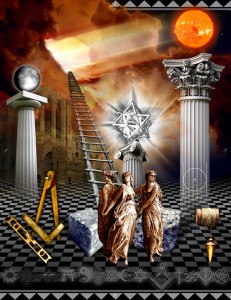
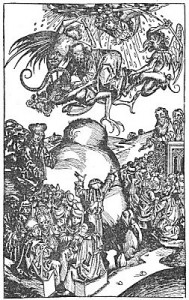
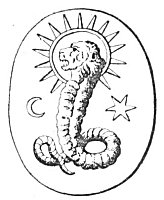
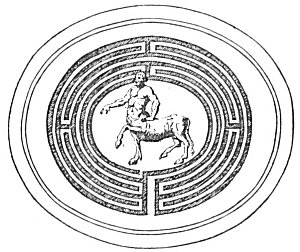
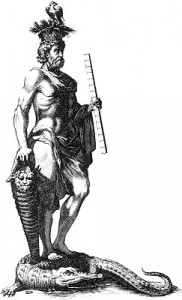
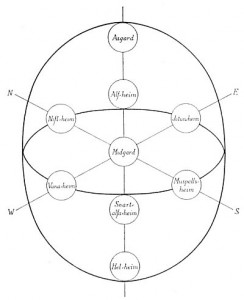
No comments:
Post a Comment